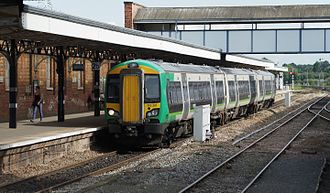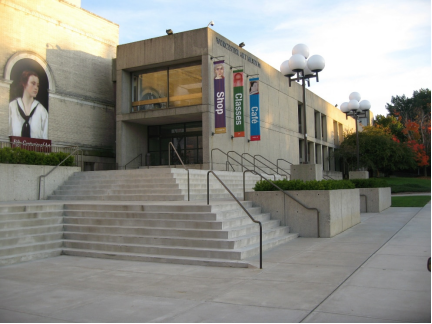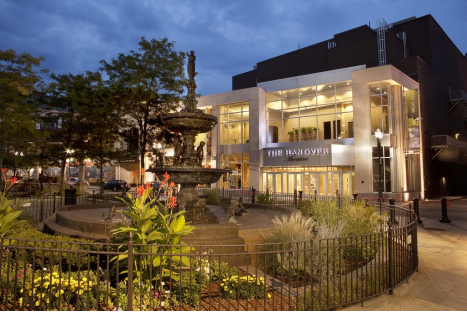Worcester, Worcestershire, England, UK 作者: 来源: 发布时间:2021-06-07
I. Population and Area
Continent: Europe
Country: The U.K
State/Province: England
City/Town: Worcester, Worcestershire
Total Area: 38.44 (sq mi)
Population in 2018: 185.9(thousand)

II. Natural Geography (environment and resources)

Notable suburbs include Barbourne, Blackpole, Cherry Orchard, Claines, Diglis, Dines Green, Henwick, Northwick, Red Hill, Ronkswood, St Peter the Great (also known as St Peter's), Tolladine, Warndon and Warndon Villages (once the largest housing development in the country when the area was being constructed in the late 1980s/very early 1990s). Most of Worcester is on the eastern side of the River Severn; Henwick, Lower Wick, St John's and Dines Green are on the western side.
Road
The M5 Motorway runs north–south immediately to the east of the city. It is accessed by Junction 6 (Worcester North) and Junction 7 (Worcester South). It connects Worcester to most parts of the country, including London, which is only 118 miles (190 km) using the A44 via the Cotswolds and M40. A faster journey to London is possible via the M5, M42 and M40, but with an increased distance of 134 miles (216 km).
Rail
Worcester has three stations. Worcester Foregate Street and Worcester Shrub Hill are in the city centre. A third station on the edge of the city, Worcestershire Parkway opened in 2020. The Cotswold line towards Great Malvern and Hereford crosses Foregate St on an arched cast-iron bridge remodelled by the Great Western Railway in 1908 with a decorative cast-iron exterior serving no structural purpose.[77] Between Foregate St and the St John's area of the city, heading towards Malvern and Hereford, the line crosses the Worcester viaduct over the River Severn.

Buses
The main operator in and around the city is First Midland Red. A few smaller operators provide services in Worcester, including Astons, DRM and LMS Travel. The terminus and interchange for many bus services is Crowngate Bus Station in the city centre. The city had two park and ride sites – off the A38 in Perdiswell (from 2001) and at Sixways Stadium next to the M5 (from 2009). Worcestershire County Council voted to close both in 2014 as part of a package of cutbacks. The service at Sixways Stadium has since been reinstated, with LMS Travel operating the W3 route to Worcestershire Royal Hospital, but avoiding city centre bus station.[
Air
Worcester's nearest major airport is Birmingham Airport, which is accessible by road and rail. Gloucestershire Airport is about 25 miles away and provides General Aviation connections and scheduled services with Citywing to Jersey, the Isle of Man and Belfast.
III. Economy
Total Gross Domestic Product for Worcester, MA-CT (MSA) (NGMP49340) Download
2018: 50,934.626
2017: 48,769.733
2016: 47,110.384
2015: 45,909.448
2014: 43,789.416
IV. Industrial Characterisitics
Major industries:
Worcester, the second largest city in the Commonwealth of Massachusetts and located at its geographic center, is a major manufacturing, distribution, service, retail, and trading center for New England. Worcester's economy is diverse, with more than 5,000 firms of all types in the metropolitan area. This diversity has served Worcester well in periods of economic downturn, as the economy is not dependant on the success of a single sector. While the national economy continues to struggle, Worcester has experienced modest growth and can boast of many positive economic indicators. Worcester is home to diverse manufacturing firms, retailers, service companies, and wholesale businesses. Economic incentives and assistance programs help draw businesses to Worcester and retain existing firms. Worcester's colleges and universities comprise the second largest employer in the city. Developments in biotechnology and high tech industries, the health industry, manufacturing, and downtown development highlight Worcester's areas of greatest recent growth. Many emerging industries such as fiber optics, electronics, and advanced ceramics are flourishing. Further, the presence of so many higher education opportunities in Worcester mean that the community's workforce is highly skilled and well-trained. The educational level of Worcester's workforce has been an additional draw to businesses in the fields of health, technology, pharmaceuticals and professional services.
Major projects and related introductions:
1. Local programs
The District Improvement Financial Program, or DIF, is a locally driven public financing alternative that allows municipalities to fund public works, infrastructure, and development projects. Projects qualifying under DIF receive advantages such as the avoidance of any new tax levies and negotiable finance terms. The Worcester Regional Chamber of Commerce also has a Business Assistance Program, which focuses on retaining existing businesses and attracting new business to the Worcester area. The Chamber of Commerce has the capabilities to assist in site searches and other technical aspects of the relocation or expansion process.
2. State programs
The state of Massachusetts offers a wide array of business and financial incentives, as well as assistance in coordinating business development and relocation. The Economic Development Incentive Program, or EDIP, was designed to create and retain businesses in target areas. State tax incentives are available to qualifying projects, including a five percent investment tax credit for tangible, depreciable assets as well as municipal tax incentives such as special tax assessments and Tax Increment Financing.
3. Job training programs
Area educational institutions work closely with local companies to design practical programs of study to prepare students for entry into the job market in such fields as electronics, machine operation, computer technology, health care, culinary arts, and clerical skills. Upgrading and retraining programs are also available. The city's Office of Employment and Training works closely with the local employment and training network providers to offer a diverse range of programs. The Office aims to prepare residents for entry into the workforce by providing access to important occupational skills matching the needs of regional employers. The Worcester Workforce Central One Stop Career Center provides jobseekers with information regarding both training and employment opportunities, including job banks, notifications of on-site recruitment, resources pertaining to training and continuing information programs, and information on distance learning opportunities. The Massachusetts Division of Employment and Training administers the Workforce Training Fund, which provides resources to businesses to train both new and current employees. The Hiring Incentive Training Grant Program provides additional incentives for businesses hiring employees who have been out of work for over a year.
Reference Website:
http://www.city-data.com/us-cities/The-Northeast/Worcester-Economy.html
V. Attractions
1. Art Museum:

The Worcester Art Museum is home to more than 35,000 works of art which date from antiquity to the present day. Cultures from all over the world are represented throughout the various exhibitions, with the collections showcasing some of the best artists and examples of each genre. A particular favorite of the museum is the silver collection by Paul Revere, as well as the armor gallery and the stunning mosaic display situated on the Renaissance Court floor. There is a well stocked gift shop as well as a comfortable café serving hot and cold refreshments.
2. The Hanover Theatre for the Performing Arts:

The elegant Hanover Theatre was originally built in 1904 and named the Franklin Square Theatre, putting on everything from burlesque shows, headline acts, Broadway touring shows and silent films. In 1912, the theatre changed ownership with vaudeville magnate Sylvester Poli purchasing, remodeling and, in 1926, adding a beautiful two story lobby together with marbleized columns, mirrored walls, glistening chandelier and lavish grand staircase. A few further changes of ownerships later, the theatre today is known as the Hanover Theatre for Performing Arts and can hold up to 2300 patrons. There are lots of shows for the whole family to enjoy from the theatre’s comfortable seats and terrific acoustics.
3. Mechanics Hall:

Originally built in 1857 by the Mechanics Association to help their members develop manufacturing skills and to learn about the running of milling machinery, Mechanics Hall was revived in 1977 and made into a concert and performing arts venue which is now ranked as one of North America’s top four concert halls! Its style is now Renaissance Revival with the building’s elegant rooms set up to host all manner of events such as weddings and galas, as well as concerts. You will certainly feel as if you have stepped back in time as you peruse the wonderful portraits featured all around the building. Often compared to New York’s Carnegie Hall for its stunning acoustics, this is definitely worth a family visit.
Reference Website:
https://www.thecrazytourist.com/25-best-things-worcester-ma/3/
VI. History
The trade route past Worcester, later part of the Roman Ryknild Street, dates from Neolithic times. It commanded a ford over the River Severn, which was tidal below Worcester before public works in the 1840s, and fortified by the Britons about 400 BC. It would have been on the northern border of the Dobunni and probably subject to the larger communities of the Malvern hill forts.
The Roman settlement at the site is omitted from Ptolemy's Geography, the Antonine Itinerary and the Register of Dignitaries, but would have grown as the road opened between Glevum (Gloucester) and Viroconium (Wroxeter) in the 40s and 50s AD. The Severn crossing at Worcester was the likely destination of an unfinished east–west Roman-dated road from Magnis (west of Hereford), until it disappeared from the historical record east of Stretton Grandison.
Worcester may have been the "Vertis" of the 7th-century Ravenna Cosmography. Charcoal from the Forest of Dean enabled Romans to operate pottery kilns and ironworks.They may have built a small fort. There is no sign of municipal buildings to indicate an administrative role.
In the 3rd century AD, Roman Worcester occupied a larger area than the subsequent medieval city, but silting of the Diglis Basin caused the abandonment of Sidbury. Industrial production ceased and the settlement contracted to a defended position along the lines of the old British fort at the river terrace's southern end.This settlement is generally identified with the Cair Guiragon attributed to Nennius[7] and listed among the 28 cities of Britain in the History of the Britons. This is probably not a Common Brittonic name, but an adaptation of the Old English Weorgoran ceaster or fort of the Weorgoran.
The form of the place name varied over history, with Early English and subsequent Norman French additions. At its settlement in the 7th century by the Angles of Mercia it was Weogorna. After centuries of warfare against the Vikings and Danelaw it had become a centre for the Anglo-Saxon army or here known as Weogorna ceastre (Worcester Camp). Between the 10th and 12th centuries, when scholasticism flourished, it became Wirccester. The county later developed from the Wigornia shire of the Anglo-Norman period, with foundations of market fairs by the Henrician and Edwardian parliaments (1216–1377). It was still known as County Wigorn in 1750,with its shire courts divided into hundreds.
VII. Culture
Festivals and shows
Every three years Worcester becomes home to the Three Choirs Festival, which dates from the 18th century and is credited with being the oldest music festival in the British Isles. The location rotates between the cathedral cities of Gloucester, Hereford and Worcester. Famous for championing English music, especially that of Elgar, Vaughan Williams and Gustav Holst, Worcester hosted the festival in July 2017, but had to postpone its 2020 festival until 2021.
Arts and cinema
The famous 18th-century actress Sarah Siddons made her acting début at the Theatre Royal in Angel Street. Her sister, the novelist Ann Julia Kemble Hatton, otherwise Ann of Swansea, was born in the city. Also born in Worcester was Matilda Alice Powles, better known as Vesta Tilley, a leading male impersonator and music hall artiste.
The northern suburb of Northwick has the Art Deco Northwick Cinema. Built in 1938, it contains one of only two remaining interiors in Britain designed by John Alexander. The original perspective drawings are held by RIBA. It was a bingo hall from 1966 to 1982, then empty until 1991, a music venue until 1996, and empty again until autumn 2006, when it became an antiques and lifestyle centre, owned by Grey's Interiors, which was previously located in the Tything. Worcester was home to the electronic music producer and collaborator Mike Paradinas and his record label Planet Mu, until the label moved to London in 2007.
VIII. Other information
The University of Worcester was awarded university status in 2005 by the Privy Council, having been known since 1997 as University College Worcester (UCW) and before that as Worcester College of Higher Education. From 2005 to 2010 it was the fastest growing university in the UK, more than doubling its student population. The university has an independent Worcester Students Union institution. The city is also home to two colleges, Worcester Sixth Form College and Heart of Worcestershire College.
The high schools located in the city are Bishop Perowne CofE College, Blessed Edward Oldcorne Catholic College, Christopher Whitehead Language College, Tudor Grange Academy Worcester, Nunnery Wood High School and New College Worcester. The last caters for blind and partially sighted pupils aged 11–18.
IX. Contact information
Mayor/Officer: Allah Ditta
Tel: 0330 123 9339
Mail: @worcestermayor(twitter)
